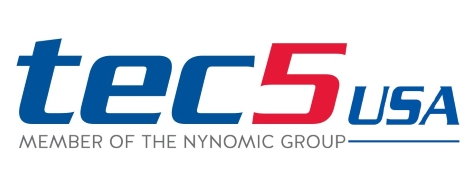Desalination processes for the production of freshwater are of the utmost importance for many nations. As regions such as California face increasing challenges with depletion of freshwater and drought alongside rising total water consumption, this demand will continue to grow.1
Generally, freshwater is defined as having less than 1000 mgL-1 total concentration of dissolved solids (TDS).
The water is considered saline when this concentration exceeds 10,000 mgL-1 and, at around 35,000 mgL-1, this concentration is greater than that of even seawater and the water is classed as brine.2
Reverse osmosis is one typical desalination procedure to reduce TDS levels. This is where a partially permeable membrane separates freshwater from ions and other unwanted species.
Compared to thermally processing water, reverse osmosis is energetically favorable. However, it still remains an energy-intensive process and, in terms of the membranes required, can be prohibitively expensive.
The water is pre-treated with chlorine compounds like hypochlorous acid to help protect the costly membranes from biofouling and optimize energy efficiency.3
However, any residual-free chlorine ions are hazardous to the membrane, and reduction agents such as sodium metabisulfite (Na2S2O5) are used by many large-scale desalination plants to neutralize remaining chlorine species.4
Risk to the membrane from the remaining chlorine is minimized by adding the reducing agents in excess. Exact dosing can be challenging because the chlorine reduction process and the required amount of reducing agent are both susceptible to the process parameters.
It is now possible to determine both the bisulfate and sulfite concentrations from the reducing agent in real-time with a recent development in process monitoring technologies that combine chemometric analysis and UV-Vis spectroscopy.5
This makes it possible to monitor the chlorine reduction process only to add the required amount of reducing agent. Doing this means water safety is not compromised and there is no risk of damaging the delicate membranes while reducing the amount of further clean-up needed and saving unnecessary chemical waste.
Analysis Process
Wastewater monitoring and management is one common use for UV-Vis spectroscopy. It can be used for online analysis and is a non-destructive measurement technique.
It can be a powerful tool for monitoring even complex reaction mixtures when combined with spectral modeling like chemometrics.
The two main sulfur species to be considered are HSO3- and SO32- for saline water within a pH range of 4.5-10. UV-Vis spectroscopy a suitable technique for monitoring reducing agent concentrations as both of these species have absorption features in the 190-300 nm wavelength region.
The presence of additional dissolved ions with their own intermolecular interactions can affect the absorption spectra of the sulfate species; their presence is the challenge for analyzing real seawater samples.
Therefore, partial least squares analysis and chemometrics techniques are required to perform accurate measurements on complex systems.
Sulfite concentrations can be determined for seawater samples using the proposed models, with similar achievable accuracy for ultrapure water measurements.
Reasonable, though lower, accuracy for the determination of bisulfite concentrations for bisulfite species was shown by this analysis approach.
Sample pre-treatment, such as water softening, could improve the accuracy of measurements, but it is overall a low-cost, viable approach to improving processing at desalination plants.
tec5 Equipment Solutions
A high-quality UV-Vis spectrometer in the UV range is required for using this methodology in desalination plants, as well as a chemically resistant compatible sample probe, in addition to online data analysis.
tec5 has established its expertise in process monitoring UV-Vis system development. The company offers many products for different spectroscopic techniques6, including the MultiSpec UV-Vis system.7
The Multi-spec UV-vis can be used at wavelengths >190 nm and offers an impressive S/N of ~20 000. This ability is ideal for tracking low sulfite concentrations in seawater.
The MultiSpec system offers an excellent return on investment as adding additives for membrane protection is costly in itself. It also reduces the operating costs of the desalination process through its easy-to-implement approach, both for membrane protection and chemical use reduction.
Various chemically resistant probes are compatible with the system when corrosion is not an issue, even at the highest salt concentrations. Measurements can be taken within just milliseconds because the system has a very short sampling time.
It is crucial to have online, rapid measurement capabilities to monitor reduction chemistry and the mixing of additives as they occur, to ensure only the necessary chemical concentrations are used.
Options include OPC and Modbus, 4.20 mA or interfacing as part of a closed-loop control connection to DCS/SCADA systems for integration into process control systems.
MultiSpec Pro II Process software is included with the tec5 UV-Vis spectrometer that is capable of performing chemometrics required for analysis of complex samples like seawater and additionally has a programmable interface for as-needed customization.
The company can also provide additional modules on request for bespoke systems.
The tec5 UV-Vis solution is an easy-to-use, robust and compact approach to protecting membranes used in reverse osmosis.
References
- Researchandmarkets.com, (2020) Global Water Desalination Equipment Market Analysis, https://www.businesswire.com/news/home/20200727005345/en/Global-Water-Desalination-Equipment-Market-Analysis-2020-2027---ResearchAndMarkets.com, accessed 19th April 2021
- W. E. Godsey (2020) Water for Hydraulic Fracs, https://www.epa.gov/sites/production/files/documents/02_Godsey_-_Source_Options_508.pdf, accessed 19th April 2021
- Prihasto, N., Liu, Q. F., & Kim, S. H. (2009). Pre-treatment strategies for seawater desalination by reverse osmosis system. Desalination, 249(1), 308–316. https://doi.org/10.1016/j.desal.2008.09.010
- Fritzmann, C., Löwenberg, J., Wintgens, T., & Melin, T. (2007). State-of-the-art of reverse osmosis desalination. Desalination, 216(1–3), 1–76. https://doi.org/10.1016/j.desal.2006.12.009
- Birkmann, J., Pasel, C., Luckas, M., & Bathen, D. (2019). Development of a Measuring Method for the Determination of Bisulfite and Sulfite in Seawater. Chemie-Ingenieur-Technik, 91(11), 1563–1574. https://doi.org/10.1002/cite.201900004
- tec5. (2021) Products. https://www.tec5.com/en/products, accessed 10th March 2021
- tec5. (2021) Multi-Spec UV-vis. https://www.tec5usa.com/, accessed 18th April 2021

This information has been sourced, reviewed and adapted from materials provided by tec5USA Inc.
For more information on this source, please visit tec5USA Inc.